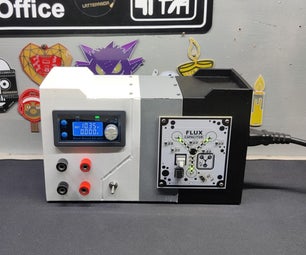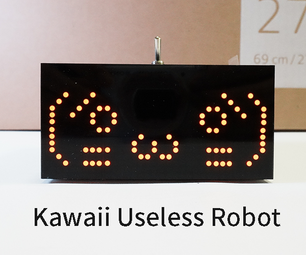Introduction: Solar Powered Street Light
Every product should solve a problem or fulfill a need. The street light with the photovoltaic shield provides many advantages in comparison to the current street lights. We waste tons of energy every day with street lights lighting places without much use most of the time. While street lights are meant to provide light for drivers, drivers still need shade to avoid being blinded by the sun. Do you hate getting blinded in the morning or evening when the sun is low and shines directly into your windshield? Well the photovoltaic shield is placed on a rail and can move up and down to provide the best diversion of direct sunlight into your vehicle. To remain with the energy conserving concept of this product, the light is provided by LEDs (Light Emitting Diodes). The large solar shield on the back provides more power than ever will be necessary to power the light so the excess electricity will be directed back into the city's electrical grid in order to power the homes and businesses nearby. As this is a more futuristic product, it could also be used to charge future electric cars or eBikes allowing people to charge them up while they are parked inside the city. The design is based off of a more modern minimalist style based off of functionality.
The whole 3D Design will be in the 123D Design free software by Autodesk (http://www.123dapp.com/design)
Credit:
The car in the realistic render is a royalty free 3d object from [http://www.free3dmodel.de/1970-chevrolet-chevelle-ss-free-3d-model.html]
The whole 3D Design will be in the 123D Design free software by Autodesk (http://www.123dapp.com/design)
Credit:
The car in the realistic render is a royalty free 3d object from [http://www.free3dmodel.de/1970-chevrolet-chevelle-ss-free-3d-model.html]
Step 1: Creating the Basic Sketch
i) Create a document in 123d Design (preferably with cm units)
ii) Select the polyline tool and create the following connecting lines:
- a) a 23cm long line at a 90 degree angle [you may need to do some camera adjusting after this]
- b) a 10 cm long line at a 120 degree angle
- c) a 7 cm long line at a 140 degree angle
ii) Select the polyline tool and create the following connecting lines:
- a) a 23cm long line at a 90 degree angle [you may need to do some camera adjusting after this]
- b) a 10 cm long line at a 120 degree angle
- c) a 7 cm long line at a 140 degree angle
Step 2: Refining the Sketch
i) Use the spline tool to curve the edge by clicking on all the joints/vertexes and then clicking enter after clicking the last end point
ii) Delete the lines from the previous step to have a cleaner look.
iii) Use the offset tool to make 2 new offset lines
- a) offset the line by 1 cm into the center
- b) offset the original curved line by 0.5 cm outward
iv) connect the lines together using FOUR lines connecting each of the endpoint separately to the one in the middle [instead of one line between the two outer ones]
ii) Delete the lines from the previous step to have a cleaner look.
iii) Use the offset tool to make 2 new offset lines
- a) offset the line by 1 cm into the center
- b) offset the original curved line by 0.5 cm outward
iv) connect the lines together using FOUR lines connecting each of the endpoint separately to the one in the middle [instead of one line between the two outer ones]
Step 3: Extruding the Faces
i) Extrude the inner arc's face by 4 cm
ii) Move that extruded shape a bit away
iii) Extrude the outer arc's face by 1 cm
ii) Move that extruded shape a bit away
iii) Extrude the outer arc's face by 1 cm
Step 4: Creating the Base + Standing Up the Poles
i) Create the base:
- a) Create a box with the dimensions: 3cm x 5cm with a thickness of 0.5cm
ii) Snap the base face of the larger pole to the top of the base [you may need to ungroup them and rotate the pole to make it straight again)
iii) Rotate the smaller pole (the rail) to the same angle as the larger pole and snap the inner side of the rail to the outer side of the pole
- a) Create a box with the dimensions: 3cm x 5cm with a thickness of 0.5cm
ii) Snap the base face of the larger pole to the top of the base [you may need to ungroup them and rotate the pole to make it straight again)
iii) Rotate the smaller pole (the rail) to the same angle as the larger pole and snap the inner side of the rail to the outer side of the pole
Step 5: Creating the Head of the Light
i) Create a rectangle
- a) Rectangle dimensions: 4cm x 0.5cm
ii) Add a three point curve across the top
iii) Delete the line in between rectangle and the semi circle
iv) Extrude the face up by 6cm
- a) Rectangle dimensions: 4cm x 0.5cm
ii) Add a three point curve across the top
iii) Delete the line in between rectangle and the semi circle
iv) Extrude the face up by 6cm
Step 6: Making and Adding LEDs
i) Create the LED
- a) Create a circle with the diameter of 0.2 cm
- b) Extrude the circle by 0.3 cm
- c) Fillet the top perimeter of the cylinder by 0.097
- d) *optional* Change the material of the LED now since it will be bothersome later, I recommend using Poly Clear as the material
ii) Snap the bottom of the LED to the rounded side of the street light head
iii) Move the LED to the bottom right of the head
iv) Use the rectangle pattern tool to fill the whole head with LEDs
-a) The recommended amount of LEDs in each direction is: 25 vertical and 15 horizontal
v) Make sure all the LEDS are touching the head of the light
- a) Create a circle with the diameter of 0.2 cm
- b) Extrude the circle by 0.3 cm
- c) Fillet the top perimeter of the cylinder by 0.097
- d) *optional* Change the material of the LED now since it will be bothersome later, I recommend using Poly Clear as the material
ii) Snap the bottom of the LED to the rounded side of the street light head
iii) Move the LED to the bottom right of the head
iv) Use the rectangle pattern tool to fill the whole head with LEDs
-a) The recommended amount of LEDs in each direction is: 25 vertical and 15 horizontal
v) Make sure all the LEDS are touching the head of the light
Step 7: Move the Complete Light Head Into Position
i) Using the move and rotate tool move the head (with the attached LEDs) so that the flat side fits on the top along the inside of the arched pole
Step 8: Creating the Solar Panel
i) Create a rectangle
-a) Rectangle dimensions: 1.5cm (width) x 3cm (length)
ii) Extrude the rectangle by 0.2cm
iii) Using the rectangle pattern tool create the following patter of the extruded rectangle:
-a) Pattern details: Width: Distance= 18.5cm Amount=13 ; Length: Distance= 21.50cm Amount= 8
iv) Create a frame
-a) Create a rectangle behind the pattern
-b) Offset the rectangle outward by 1cm
-c) Extrude the offset frame by 0.5cm
-a) Rectangle dimensions: 1.5cm (width) x 3cm (length)
ii) Extrude the rectangle by 0.2cm
iii) Using the rectangle pattern tool create the following patter of the extruded rectangle:
-a) Pattern details: Width: Distance= 18.5cm Amount=13 ; Length: Distance= 21.50cm Amount= 8
iv) Create a frame
-a) Create a rectangle behind the pattern
-b) Offset the rectangle outward by 1cm
-c) Extrude the offset frame by 0.5cm
Step 9: Placing the Photovoltaic Solar Panel Shield
i) Using the rotate and move tool place the center of the solar panel against the rail with the solar cells facing outward
ii) It does not matter where along the rail you place the panel as theoretically the panel will be moving throughout the day depending on the sun's position.
ii) It does not matter where along the rail you place the panel as theoretically the panel will be moving throughout the day depending on the sun's position.
Step 10: CONGRATULATIONS YOU FINISHED!
Congratulations on finishing the tutorial! I hope you enjoyed creating this innovative futuristic street light and can find some inspiration in the sustainable features it presents. As the instructable is meant for a contest it would be AWESOME if you could vote for it! It took quite some time to put this all together so any support/suggestions are gladly accepted. Hope you have a wonderful day and this instructable gave you some sort of new ideas or incentive to vote :).
-Felix Elfering
-Felix Elfering

First Prize in the
Autodesk 123D Design Challenge







